Trash Chute, Construction Chute, Roofing Chute & Demo Chute Wholesaler
Trash Chute, Construction Chute, Roofing Chute & Demo Chute Wholesaler
What are OSHA's Scaffold Erection Requirements?

Construction companies rely on scaffold erection to facilitate work at heights on construction sites. However, proper adherence to OSHA regulations for scaffolding is crucial to prevent accidents and ensure worker safety. Familiarize yourself with OSHA’s scaffold erection requirements to maintain a safe working environment.
To minimize accidents and worker fatalities on scaffolding, OSHA has established specific requirements for scaffold erection.
OSHA’s Scaffold Erection Requirements
Here are some key regulations to consider:
1. Installation of Guardrails on All Open Sides
OSHA’s S 1926.451(g)(1) mandates the installation of guardrails on all open sides of scaffolding that is at least 10 feet high. This provides fall protection for employees. Guardrails must be installed prior to use, and a competent person must verify and certify their safety.
2. Supervision by a Competent Person
OSHA emphasizes the importance of a competent person supervising scaffold erection. This individual should be able to identify existing and potential hazards and have the authority to take immediate corrective actions. Becoming a competent person requires proper training and experience, as outlined by OSHA.
3. Regular Scaffold Inspection
Scaffolding must be inspected before each work shift and after any incident that could compromise its integrity, according to OSHA’s S 1926.451(f)(3). Employees should not use the scaffold until it has been inspected and approved by a competent person.
4. Proper Design and Capacity
OSHA’s S 1926.451(a)(1) requires scaffold designs to support their weight and at least four times the intended load. A competent person should design the scaffold, considering the desired capacity and load rating. Overloading the scaffold must be avoided.
5. Use of the Same Material
Components used in scaffolding must be of the same material, and mixing parts and accessories should be avoided to maintain structural integrity. Components must also be from the same manufacturer, as recommended by a competent person.
Understanding OSHA Scaffolding Standards and Requirements for Safe Construction Sites

The OSHA guidelines for scaffolding also include platform requirements, ensuring scaffolds can support the intended load plus at least four times the expected weight. Job-built scaffolds must meet these specifications, and components should come from the same manufacturer to avoid compromising the scaffold’s strength. Understanding and implementing these regulations is essential for maintaining a safe and compliant construction site. For all your scaffolding needs, including installation and equipment, make sure to follow OSHA scaffolding standards to ensure maximum safety for your crew.
Qualifying Supported or Suspended Scaffolds
Supported and suspended scaffolds are essential tools in construction projects, offering a secure platform for workers. Understanding the difference between supported and suspended scaffolds is crucial for safe and proper use.
Supported scaffolds rest on the ground or another solid surface, while suspended scaffolds hang from an overhead structure. Both types must meet specific requirements for safety, including proper anchoring, guardrails, and fall protection systems.
Exploring Different Types of Scaffolds and Their Regulations
Scaffolds are crucial components in construction, providing support and access to workers on elevated surfaces. Different types of scaffolding systems exist, each with its own regulations and safety requirements. This article explores various types, such as mobile or fixed platforms and aerial lifts, and discusses the regulations for constructing and using these structures. By understanding these requirements, you can ensure the safe and efficient completion of projects.
Understanding OSHA’s Scaffold Erection Requirements
Properly understanding the components and parts of a scaffold is essential for safe erection. This knowledge ensures the scaffold is constructed and secured correctly, preventing injuries and maintaining operational efficiency. This article discusses the different components and parts of a scaffold, emphasizing their importance for safe erection.
Common Challenges With OSHA’s Scaffold Erection Requirements
Erecting a scaffold can be a dangerous task if not done properly. It requires the right tools, knowledge, and experience to ensure safety. This article discusses common challenges encountered during scaffold erection and provides tips to avoid accidents. It also highlights the importance of adhering to safety practices and utilizing appropriate equipment.
Takeaway
Familiarize yourself with OSHA’s scaffold erection requirements to ensure compliance and promote worker safety. Contact HodChutes for quality scaffolding rental and sales, as well as construction trash chutes. We are your reliable source for scaffolding and construction waste management. Contact us now.
ISO CERTIFIED

SECURED PAYMENT
